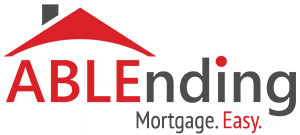Which Mortgage Is Best For You.
Buying a home is probably the biggest decision you will every make. But deciding to buy is only the first step in the decision making process.
Now, you must decide what type of mortgage is best for you, and if you’ve never bought a home before then the terms can be confusing.
Many factors must be considered when selecting the right mortgage. Most importantly, borrowers must understand how the different types of mortgages are structured.
The three most common types of mortgages are adjustable rate mortgages, fixed rate mortgages, and balloon mortgages.
An adjustable rate mortgage (ARM) is structured so that the interest rate is not locked down.
Usually, the introductory rate is set for about 5 to 7 years, at which point it will be adjusted either up or down, depending on the current interest rates.
After the initial rate adjustment, ARMs are usually adjusted every two years for the remaining length of the loan. Interest rate adjustment is usually capped at about 2 percent, meaning that the interest rate cannot be adjusted more than that each time.
ARMs are also set with a maximum adjustment rate. If the maximum adjustment rate is 7 percent, that means that the highest rate the borrower ever pays is 7 percent above the initial interest rate on the loan.
Fixed rate mortgages (FRM) are just that: fixed. The interest rate will never be adjusted.
These mortgages offer the lowest risk to the borrower, because they protect from rising interest rates. If the life of the loan is 30 years, then the borrower is protected for 3 decades from fluctuations in the market.
Drawbacks of FRMs are two-fold. If interest rates go down, you are locked into a higher rate. And often FRMs carry higher loan costs, because they carry high risks for the lender.
If a lender signs you to a 30 year FRM at 6 percent interest, and then interest rates continue to rise, the lender is locked into accepting 6 percent interest for the life of the loan.
Balloon mortgages operate quite differently, and are structured so that there will be a balance at the end of the term – usually 5 or 10 years – that must be repaid.
Some balloon loans only require that you pay the interest during the loan term, which means monthly payments are often very low, but at the end of the loan the original balance will be due in full.
Another type of balloon loan calculates payments as if the loan were to be paid in full over 30 years, which does reduce the balance at the end of the term.
Still, this type of loan must be refinanced after the loan term is up. Balloon loans can be beneficial if the borrower expects to resell the house at a profit before the ending balance comes due.
The type of mortgage you select depends largely on your plans for the house. Are you planning to live in it long term or short term?
Do you expect the property to appreciate rapidly? Keeping your long-term goals in mind will help you choose the mortgage that is right for your unique situation.

Leave A Comment